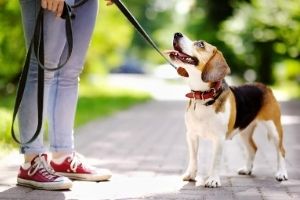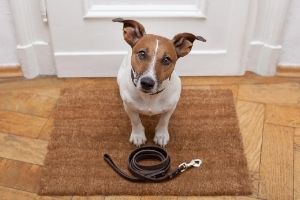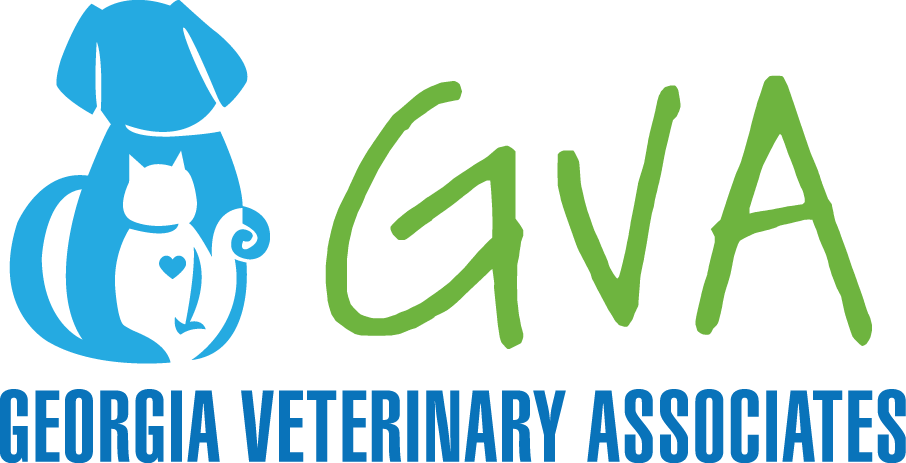“Dogs are not our whole lives, but they make our lives whole.” - Roger Caras
It’s truly difficult to describe the profound effect that a dog can have on your life, as they have this way of making everything more wonderful...yes, even after they’ve chewed your fifth pair of slippers. If you’ve just taken the leap for the first time or braved to share your heart again, it’s time to get something to make sure that dog walks go smoothly. Dog walks are not only a chance for your pet to get the exercise they need, but it's also great for bonding. This leaves the same old questions, though. Do I need a harness or a collar? What kind of leash should I get? How do I know if it fits? What is this “Gentle Leader” thing?
And let’s face it, the average teen at your corner pet supply store, while well-meaning, isn’t going to know much more about these things than surface-level information. Because we know you want to make the dog walks go well and that you want your dog to be confident and comfortable, we’ve dedicated this post to help you decipher the leash-collar-harness code.

How Do I Choose Between a Collar and Harness, and How Do I Find the Right Size?
Every dog should have a collar. It is your personal preference if you want a buckle, latch, cloth, or leather. The collar goes around the dog’s neck and, to be honest, you should always have a collar for all of your pets that has identification on it. So, that way if they ever get loose, or anything ever happens to them, there's that identification on them at all times. So, your collar is used for when you take your dog for a walk but should also be on most of the time anyway.
First and foremost, make sure the collar is fitted because you don’t want that collar coming off the dog. Cat collars can be used for small dogs, but not for walking, as cat collars are breakaway collars because cats get caught on things when they are outdoor cats and need that option for release. So if you do have a small dog and use a cat collar, do not use that for walking purposes. In order to make sure your collar fits your dog, use a piece of string or a measuring tape. If you use the string, you can enlist a ruler to get the measurement once you’ve wrapped it around your dog’s neck for measurement. When testing out the collar on your dog, make sure you can easily slide two fingers around the neck.
If, for example, you find a collar that says 14 to 18 inches and your dog’s measurement was 15 inches, you’re good to go. But if the collar were to say that the lowest is 15 or the highest is 15, you actually want to find something in between those two, or at least go with a size up. Err on the side of slightly too big if you need to, as you don’t want to injure your dog’s neck.
The last test is for you to try and pull it over your dog’s head. You obviously don’t want it to be able to come off too easily, so keep making adjustments until this is the case.

When Would I Choose a Harness For My Dog?
If your dog is extra small, has difficulty breathing, or perhaps they like to pull so much you are afraid they might hurt themselves, a harness is the better option.
When choosing a harness, the first step is to identify your dog’s pulling level. The wrong harness can make it easier for your dog to pull you around. Think about a horse when they are pulling a carriage. They have a contraption that distributes the pulling capability around their body. That is what putting a harness on your dog will do—it allows them to pull more weight.
So why would a veterinarian still tell you to get a harness? It’s all about where you attach the leash. For a well-behaved dog, having the clip on the back is fine. For a dog that pulls, the clip should be on the front of the harness, on the chest. This keeps your dog from pulling with all their might and allows you to work on their polite walking skills.
To fit a harness, the same rules apply as a collar. You want to be able to fit two fingers under all the straps on your dog but also not be able to pull it over the head. Start by fitting the straps along the body and work your way up to the neck, adjusting little by little each time. Every time you place the harness on your dog, give them a treat so they start to associate the harness with good things. Once you feel that the harness is good, there is a two-finger spacing, and it doesn’t come off when you give it a gentle tug to the front of the body. Test it by taking a walk in a secure area, inside your home, or in the yard see that it isn’t moving around the body, loosening up, or rubbing anywhere. Make adjustments as needed.
If you think a harness might be better for your dog, it helps to know a bit about the various kinds of harnesses, which are as follows:
- Front clip or “no pull” harness - for dogs that pull that you need to have more control over.
- Y harness - where the harness intersects on the chest and makes a Y; for smaller dogs or dogs that do not pull.
- Strap harness - this has a strap that goes across the chest and around the body. These have been labeled as “no pull” harness but in my experience, they still pull.
- Compressing harness - this is a harness that will wrap around the dog and when the dog pulls, the harness tightens around the body. Check with your veterinarian first before using this harness, as it is intended for use in extreme situations and under the instructions of a professional.
You want to check your dog’s collar and harness at least every month to ensure that it fits properly. Puppies will require a weekly check until they stop growing.

What Do I Need to Know When Choosing a Leash?
When picking out a leash for your precious pup, the most important considerations are size and length. You should always have a 6-foot leash, as this is not only the best for training, but it’s also the standard length as part of the leash law in most states.
When it comes to thickness, you will need to consider the size of your dog. Thin ½ or ¾-inch leashes are for small dogs or those under 15 lbs. If they are around 15 pounds and they pull, move to the larger, ¾-inch leash. The medium thickness dog is between 15 to 60 lbs. For dogs over 60 lbs, the 1-inch thickness is best. Always go up in thickness for a dog that is a puller. If your dog is well behaved, does well on loose-leash walks, and you have the need to keep them closer to you, a 4-foot leash can work, but it’s still recommended to always have a 6-foot leash on hand.
On the whole, veterinarians will advise you against retractable leashes, as they can cause confusion for dogs that are just learning polite walking skills. They also have a high risk of injury as well when not used properly. If you absolutely insist on using one of these, use something like nail polish to mark 6’ and 4’-lines on the leash—one line for 4’ and two lines for 6’. That way, you lock out the desired length to reduce the risk of rope burn or other injuries.
If your puppy likes to chew on the leash, you can spray down the leash with a chew deterrent you can get at most pet stores, or you can also use a basic bar of soap or even Tabasco sauce!

What Information Should I Include On My Dog’s Tag?
While microchipping is the best thing you can do to ensure the safe return of your dog if they are lost or stolen, it’s also extremely important to have the vital information needed for your dog’s safety on their tags.
We suggest you include the following information on your dog’s tags for their safety:
- The dog’s name
- Your phone number and a second contact number, if possible
- Any medical conditions or medications needed by your dog
- An indication of whether your dog is a service dog, if applicable
- Your dog’s license number, which will include their rabies vaccination information
Many counties across the country use PetHub, which is great, as it includes a QR code. When this is scanned, the humane society (or whoever is scanning it) will find the vaccination information as well as the license and microchip number for the lost or stolen dog.
As veterinarians, we see far too many injuries that are a result of ill-fitting harnesses, collars, or retractable leashes that aren’t being used properly. We know you love your dog so please don’t hesitate to give us a call to ensure you’re making the best decision when it comes to leashes, harnesses, and collars.
